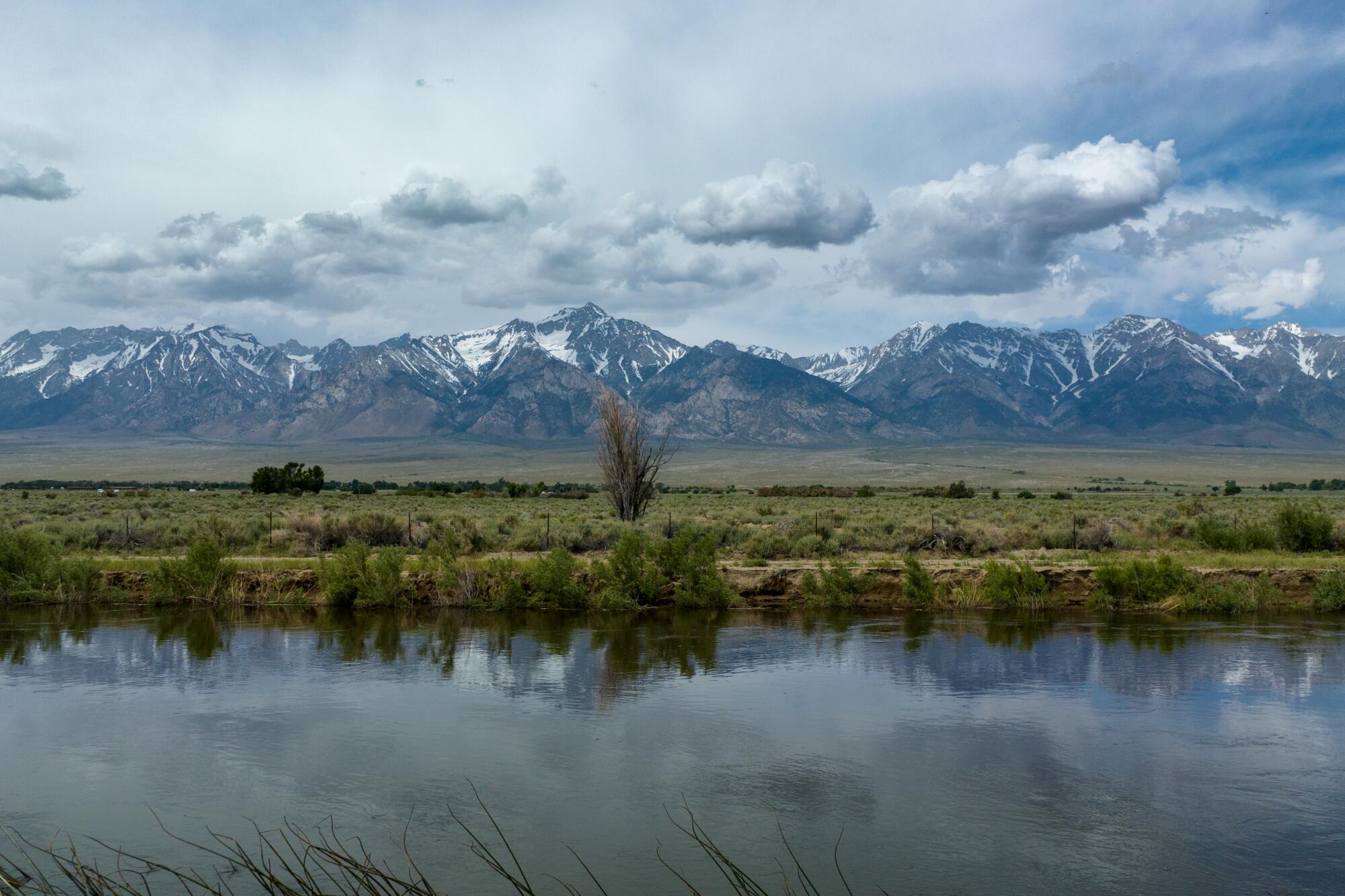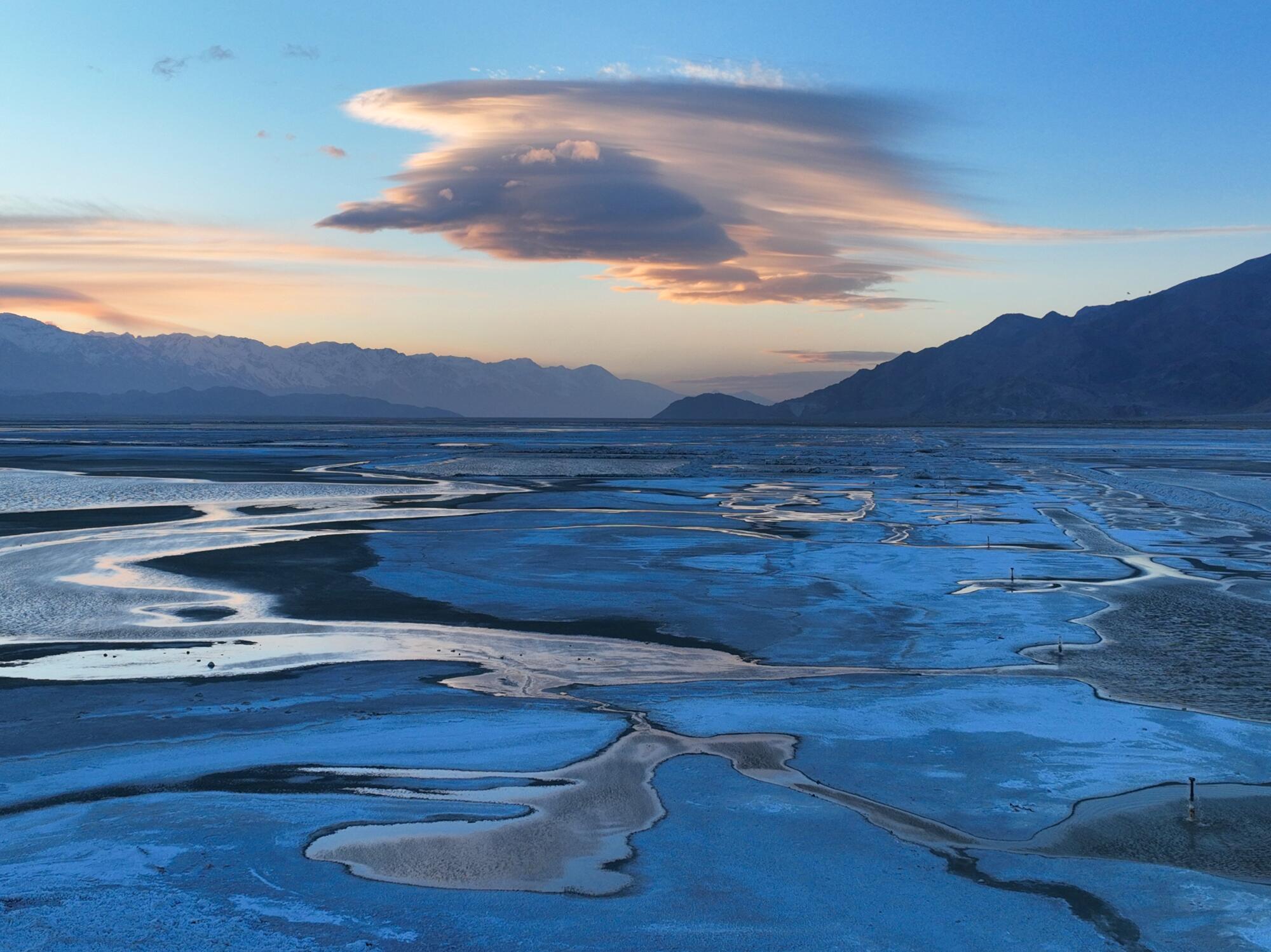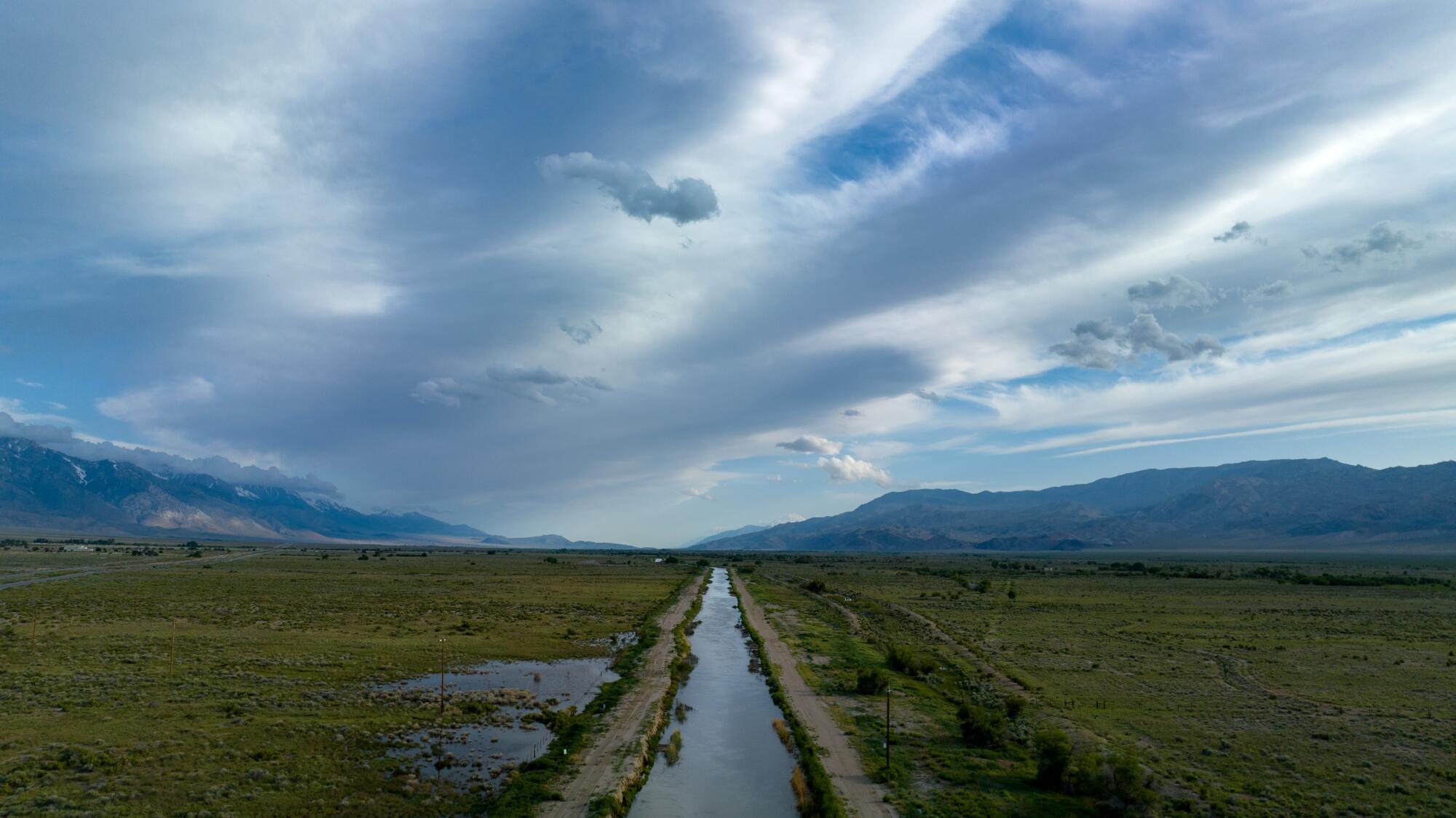
- Share via
- A century ago, people in the Owens Valley carried out a defiant act of protest, taking over part of the L.A. Aqueduct and releasing water.
- An event this weekend focuses on the history of that resistance effort, and Los Angeles’ continued reliance on water from the Eastern Sierra.
It’s a chapter of California history filled with subterfuge and conflict: More than a century ago, agents secretly working for Los Angeles posed as farmers and ranchers as they bought land and water rights across the Owens Valley. Their scheme laid the groundwork for the construction of the Los Angeles Aqueduct, which in 1913 began sending the valley’s water to the growing city 233 miles away.
Residents were so enraged in the 1920s that some carried out a series of attacks on the aqueduct, blasting it with dynamite.
But there was also one major nonviolent protest, an act of civil disobedience 100 years ago that is being commemorated this weekend with a series of free community events in Lone Pine.
In that defiant act of resistance on Nov. 16, 1924, a group of about 70 unarmed men took over an aqueduct spillway and control gates north of Lone Pine and began releasing all the water back into the dry channel of the Owens River. That act, called the Alabama Gates occupation, grew as more than 700 residents of all ages came to celebrate the takeover during four days of festivities, bringing food and barbecuing as the protest became a community picnic.
“It’s a significant historical event that needs to have a light shined on it,” said Kim Stringfellow, an artist, educator and writer who is organizing the centennial event. “It’s worthy of recognition in the history of Owens Valley, to show how this community stood up to this huge metropolis with lots of power and money.”
Los Angeles is set to build a facility in the San Fernando Valley that will transform wastewater into enough pure drinking water for about 250,000 people.
Stringfellow lives in Joshua Tree and her interest in the history of the Owens Valley resistance effort grew out of her research on California water history.
The weekend event, called Alabama Gates 2024, starts Friday (Nov. 15) with an opening reception, followed by panel discussions with conservationists, local Indigenous leaders, historians and other experts, as well as a picnic at a park where a local bluegrass band will perform. Attendees can sign up for a walking tour of bird habitat areas at the dry Owens Lake.
Stringfellow said the history of the aqueduct’s takeover has relevance today and will be part of broader discussions about the past, present and future of water in the region. She said she hopes the gathering will bring greater awareness about that history and the large portion of L.A.’s water supply that continues to come from the Eastern Sierra.
“We really have to look behind us to consider what’s ahead of us,” she said.
Stringfellow said one of her goals is to help generate discussion about how Los Angeles can reduce its dependence on water imported from the Eastern Sierra and other sources hundreds of miles away.
Another focus is the history of Indigenous people, the Paiute and Shoshone, who decades before L.A.’s water grab saw their ancestral lands taken and occupied by white settlers.
The Indigenous people called their homeland Payahuunadü, “the place where the water always flows,” said Kathy Bancroft, tribal historic preservation officer for the Lone Pine Paiute-Shoshone Tribe.
“This valley supplied everything we needed. There was water everywhere,” she said.

The Paiute and Shoshone suffered after the arrival of settlers, including in 1863, when troops forced nearly 1,000 Native people to march out of the valley to Fort Tejon, about 175 miles away. Bancroft’s great-grandmother, who was a young girl at the time, was among those who escaped from the fort and safely made the journey back home on foot.
In the early 1900s, Indigenous people had recently come out of hiding to work in mines and on ranches, Bancroft said, and they didn’t take part in the resistance at the aqueduct in 1924 because “they were in survival mode.”
Her tribe’s reservation was established in 1939, along with those of three other tribes. But their water rights were never settled, an issue Bancroft plans to discuss during the event.
“We are responsible for taking care of everything in this valley, and it’s hard when there isn’t water where there used to be,” she said. “It’s really been a really complicated issue, and it just needs to be brought to the forefront and resolved.”
She and other participants said they would like to see Los Angeles take less water from the Eastern Sierra.
The federal government and California water agencies announced an agreement to raise a dam and expand San Luis Reservoir, increasing its water-storing capacity.
“Our ecosystems, our species are still suffering a lot up here because of unhealthy levels of extraction,” said Wendy Schneider, executive director of Friends of the Inyo, a conservation group that is co-sponsoring the event. “If we could have a significant reduction in extraction, like 25% to 30%, it would make a huge difference for our ecosystems up here.”
Schneider said the effects of water withdrawals can be seen in areas where native vegetation has dried up because groundwater levels have declined. She said she thinks while some of Los Angeles’ environmental mitigation projects have been effective, others haven’t.
“I am hoping that this event reminds people that everything is not OK,” Schneider said. “We all need to work together to get this giant agency to do the right thing and work with us in a more meaningful way so that we can have healthy ecosystems up here.”

The environmental effects of L.A.’s water diversions have been a source of tension for years. Over the last three decades, the Los Angeles Department of Water and Power has been carrying out extensive dust mitigation projects on the dry lakebed at Owens Lake, and has invested about $2.5 billion in the efforts.
Stringfellow said she invited DWP to participate in the event and requested access for a group to visit the Alabama Gates facility.
“Unfortunately, key staff were unable to participate on this date and we were unable to accommodate the request,” said Ellen Cheng, a DWP spokesperson. “We regularly participate and support many community events in the Owens Valley and Eastern Sierra and would welcome the opportunity to participate in an event in the future.”
She said DWP supports and partners with various local organizations in the region. And this week, the agency’s top officials joined Inyo County supervisors and residents for a committee meeting and tour of the Lower Owens River Project, a major river revitalization effort.
New research shows global warming has become the dominant driver of worsening drought in the western United States.
Cheng noted that over the last 30 years, DWP has reduced the amount of water flowing through the L.A. Aqueduct by 50% to “meet our environmental commitments in the Eastern Sierra.”
Water flows with gravity in the aqueduct, making the supplies more economical than the city’s other imported sources, which require energy-intensive pumping. Cheng said the water from the Eastern Sierra “remains an important and cost-effective part of L.A.’s water supply.”
During the last five years, Los Angeles has imported nearly 90% of the city’s water, drawing on supplies from the Colorado River and the Sacramento-San Joaquin River Delta as well as the Eastern Sierra.
L.A. residents have made significant progress in conserving water in recent years, using less today than they did half a century ago, despite the city’s population growth.
DWP has also been investing in developing more local supplies to reduce reliance on imported water and prepare for worsening droughts compounded by climate change.
In one such project, the city will soon begin building a $740-million facility to transform wastewater into purified drinking water in the San Fernando Valley.










